Medellín used to be called the “murder capital of the world”—but now, it’s a hopeful and vibrant city. We had three days to explore and learn about the city, and we both wish we could have stayed here longer.
So what makes this city so great? Here are some of the highlights for us:
Learning about Medellín Through a Free Walking Tour
This was the perfect way to orient ourselves to the city on our first morning. Our tour guide was a born-and-raised paisa (the term for someone from Medellín and the surrounding area). Over the four-hour tour, she shared Colombia’s rich history with us, as well as the history of Medellín—from their economic success due to gold mining and the industrial revolution, to the extensive period of violence with the guerrilla warfare and drug lords.

Many of the questions people asked on the tour strayed towards topics related to the drug trade and unauthorized rule of the city by Pablo Escobar, the billionaire drug lord who ran Medellín’s drug cartel. The tour guide answered everyone’s questions, after stating at the beginning of the tour that no question was taboo or off-limits. Interestingly, she never said Escobar’s name—she only ever referred to him as “the city’s most famous criminal.”
While she didn’t explicitly explain why she avoided his name, I had learned from other tour books for Medellín that many paisas don’t want to talk about Escobar because of all the associated violence and pain with him, and even with just his name. Almost everyone in Medellín had been affected immensely by Escobar’s hold on the city—for better or worse.
For example, our tour guide said that her uncle had been kidnapped and later killed by Escobar’s cartel. Growing up, she said it was common for there to be shootings on the street and grenades going off at random. On the other hand, we heard from some Canadian tourists that did an “official Escobar tour” that others in the city still idolize Escobar for his Robin Hood-like tendencies to help the poor.
Escobar was eventually killed in a rooftop shootout in 1993, but the city still faced lots of violence and problems in the time following that—partly due to a now-fragmented and even more volatile cartel, partly due to continued guerrilla warfare throughout the country.
As the city started to invest more in education, social urbanism projects, and transportation infrastructure, Medellín transformed into an economically progressive and safe city for both paisas and visitors. One example of a social urbanism project was the transformation of a park near the city’s center. Though the cartel had controlled it formerly and left it in disarray, the city reengineered the park into an inviting, artistic space for families and individuals to enjoy.
But the tour was more than just a discussion of the city’s violent history and recent transformation. We walked to major Medellín sites, like the cathedrals, the plazas, and the huge network of street vendors, and learned more about the culture of the city—how to haggle here, the best food to eat, where to watch out for pick-pocketers.
Riding the Metro and Cable Cars
Medellín is the only Colombian city with a metro, and it’s great. Clean and secure, with trains coming every 4-5 minutes. It’s much better than DC’s metro system, and it only costs less than 1 USD for a ride!
The metro system also includes cable cars that connect to the hillside neighborhoods and some of the poorer areas of the city. Because the metro is so cheap and accessible throughout the city, it has opened up employment opportunities for more people—thereby helping to improve the economy and further contribute to the city’s transformation.
Eating Traditional Paisa Food
We sampled two traditional dishes from Medellín. First, the bandeja paisa—a huge plate of rice, beans, chorizo, sausage, and chicharron. Probably at the bottom of the healthy-eating list, but enjoyable nonetheless! We shared a large and reasonably priced portion at La Hacienda in the main city center.
Second, mondongo—tripe soup. At first I thought I wouldn’t be able to stomach it (dah-dum dum), but both of us decided it was our favorite food of the trip so far. So tender and flavorful! It was also served with avocado, banana, and cilantro that you could mix in and heighten the flavors even more.
Going Out in El Poblado
A better nickname for Medellín today may be the nightlife capital of the world. The party scene in El Poblado neighborhood is not to be missed, even for regular homebodies like myself.
In particular, the blocks around Parque Lleras are where you will find tons of the bars and restaurants. We had fun going out with some people we met at the hostel, and though we were back by 2 am, we heard that it’s not uncommon for paisas to be out until dawn.
On Sunday afternoon, we returned to Parque Lleras to watch the NFL semifinals at Paddy’s, an Irish pub frequented by American ex-pats and travelers—it was a nice taste of home!
Viewing Botero Sculptures
Remember the Botero museum from Bogotá, with his portly (fat) paintings and sculptures? Well, Botero is from Medellín, so there is even more of his stuff here. And apparently, our tour guide said that his style isn’t fat but instead “disproportionate.”
Plaza Botero, in the center city, is full of his huge, disproportionate statues, ranging from sunbathing women to cats and dogs. The Museo de Antioquia, located on the plaza, has even more.
The nearby San Antonio park has two adjacent Botero sculptures.
As you can see, the first one was blown up and nearly destroyed when a grenade went off during a music festival there in 1995. Twenty-three people were killed, and many more were injured. (And they never found out who set it off … could have been the guerrilla armies, or maybe the cartel.)
Instead of throwing the ruined sculpture away, Botero himself insisted that it stay in place as a memorial to the victims and reminder of the tragedy. But to accompany it, he created the new sculpture. As our tour guide emotionally explained, the first statue is a symbol of her childhood and the fear and violence associated with that time, and the second statue is a symbol of the progressive present and hopeful future of Medellín.
Travel Notes:
- We stayed in El Poblado, a popular area for travelers to stay. In addition to the nightlife, it’s a safe neighborhood with plenty of restaurants and shops, and also pretty close to the metro. It was safe to walk around here during the day and night.
- To reiterate the point, please take the walking tour! We did it through Real City Tours, and make your reservations online ahead of time (you can only reserve online a day-and-a-half before). It’s tips-only, so also a good thing to do if you’re on a budget.
- We bought individual tickets for each metro ride. To save a bit of time and avoid the ticket lines, buy a handful at a time (if you know you’ll be taking the metro later.)
- One metro ticket will also include the cable cars (unless you actually get off at a station.) So for less than a dollar, you can get an aerial tour of the hillside pueblos of Medellín. It’s okay if you take the cable car back and forth without getting off.
- Some museums and other attractions are closed on Mondays (or other days), so check before you go.
- The main airport is actually located about an hour away. We took a colectivo bus from the airport for 9,000 COP (~3 USD) per person, and it drops you off in the city center.


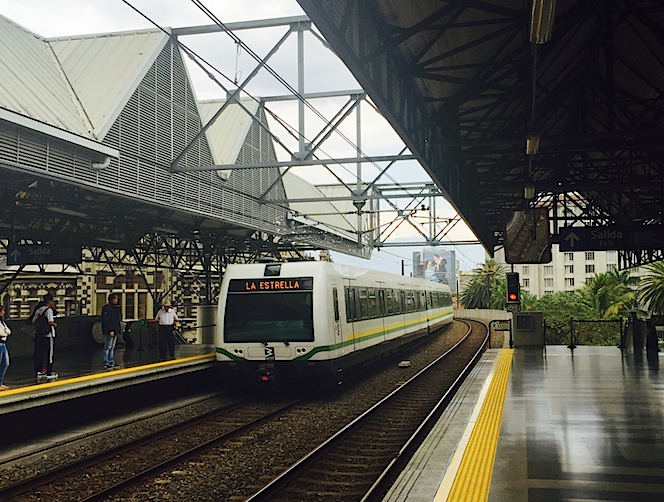
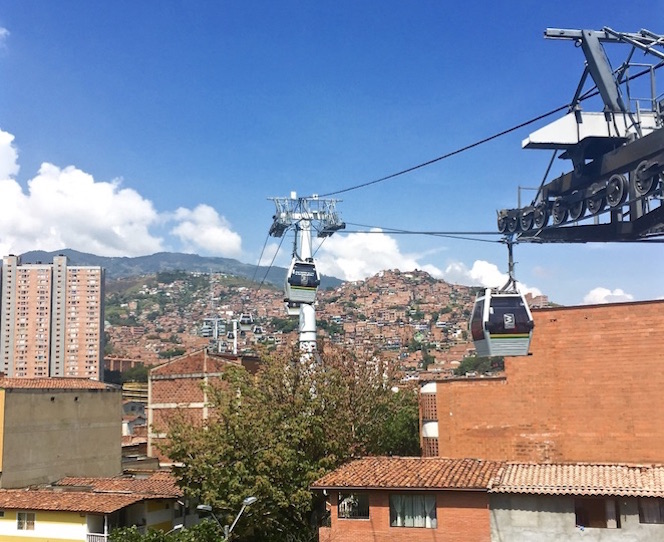
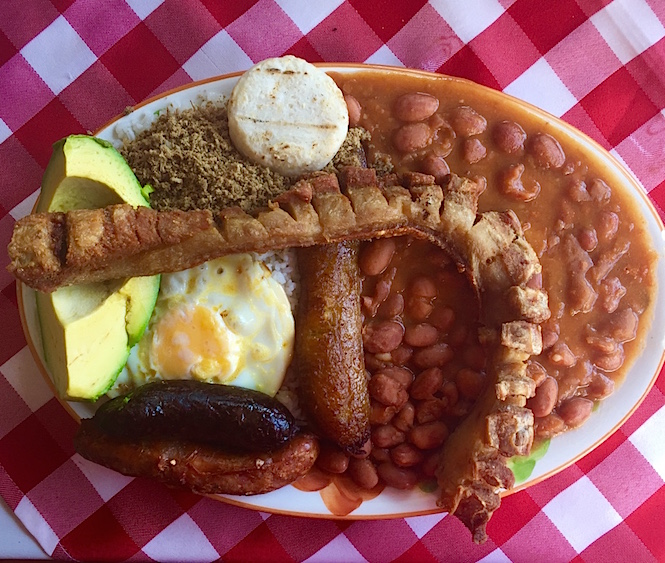
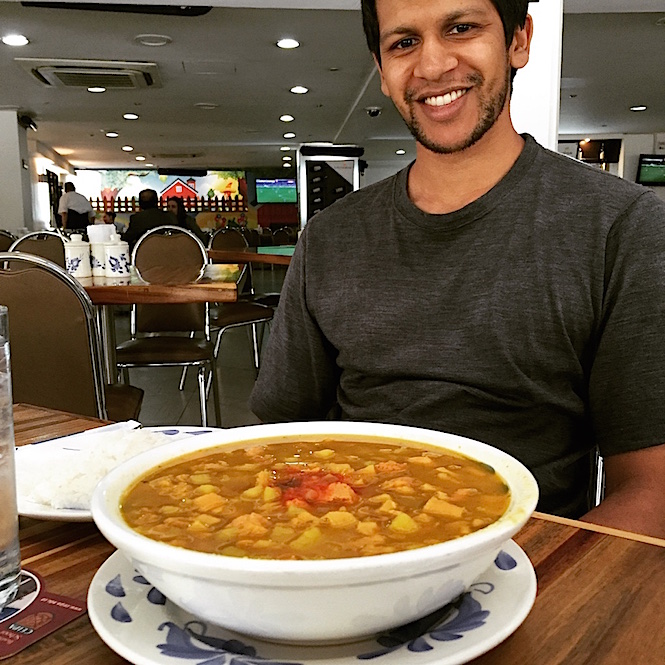
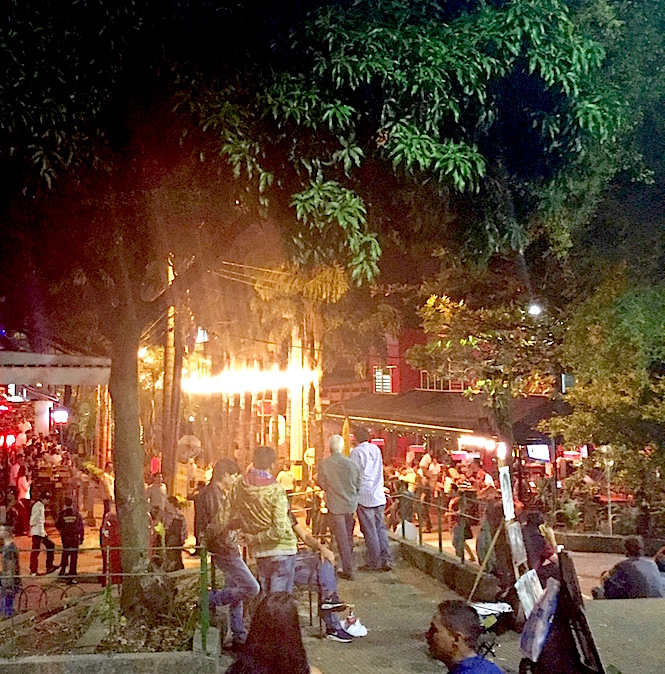
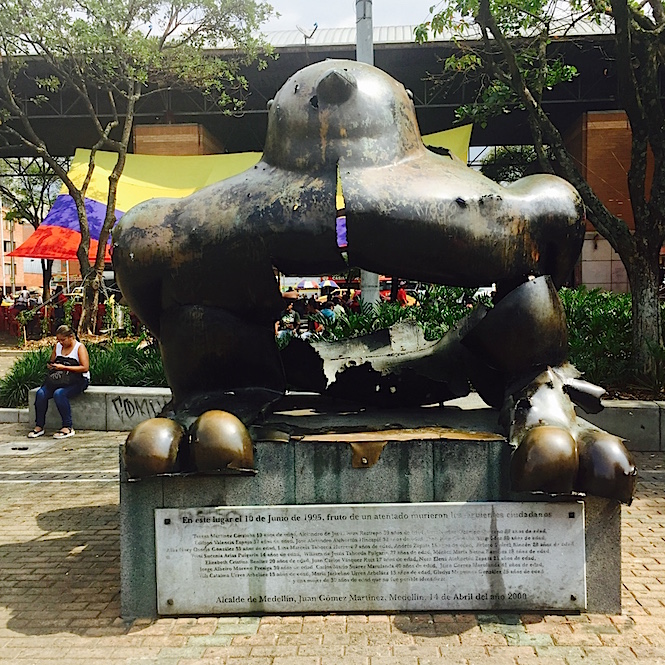
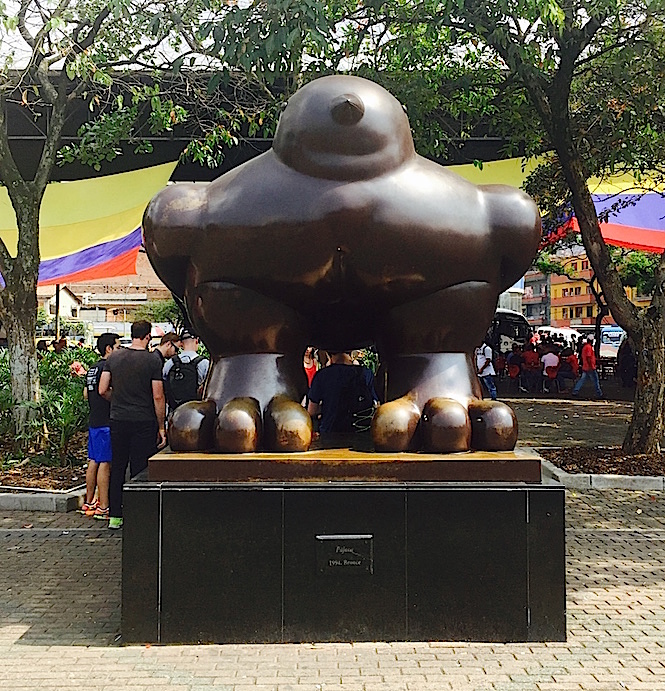

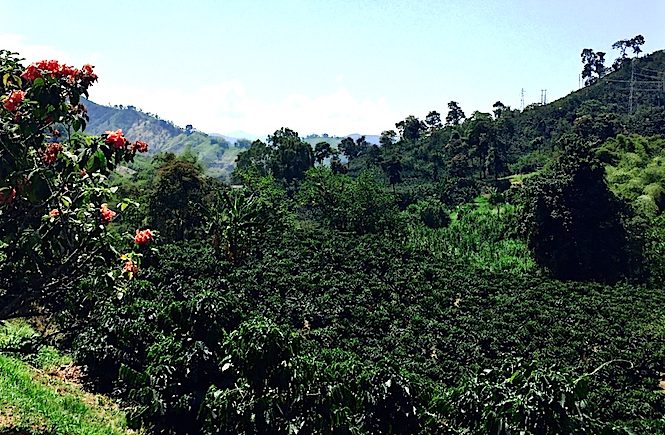

8 Comments
Wonderful description. You two are experiencing and learning so much. Keep it up! xoxo
I am enjoying the ride! I love traveling the world, and you are filling in the gaps of exciting places we have yet to enjoy!…for me and my husband!!!
I can see, smell, and taste the city!
Narcos spoiler alerts!!
Oops! Sorry!
haha no it’s okay! I love hearing about the history first hand. so cool you got to learn all that while staying in the town!
Appreciate your blog. Satisfies the curiousity for those who do not have the time to travel yet. Very vivid storeytelling, I can imgaine myself posing in front of those colorful houses. Keep ’em coming and always take care.
Thank you, I’m glad you’re enjoying the blog!